Marine
MRV Alba na Mara: Survey 2316A Programme
December 12, 2016 by Marine Directorate Communications No Comments | Category Fisheries, Marine Directorate general, Marine Directorate Science, Marine Directorate Surveys, Research Vessel Surveys
Duration: 8-21 December 2016
Equipment:
- Sandeel dredge × 2 (modified 4′ scallop dredge with 6″ teeth and spare toothbars) with towing bar and camera attachment.
- TV camera.
- Minilogger (or equivalent – i.e. DST).
Objectives:
- To determine the abundance, length and age of sandeels in the sediment from regions east of the Firth of Forth and around Turbot bank.
- To collect and preserve samples of A. marinus, specifically i) all 0-group sandeels (size to be estimated from age/length keys of sampled catches) not required for age determination; ii) 100 age-1 individuals from each of the northerly and southerly sub-regions.
- To determine the sex and maturity stage of all sandeels selected for ageing.
- To collect caudal fin tissue clips from sandeels selected for ageing –individuals of age 1+ should be targeted to maximise the likelihood fish are local. 70 samples will be taken from each sub-region (north and south; 140 in total).
Procedure:
All required gear will be loaded onto the vessel on 6 December. Scientific staff will be transported to Leith to join the vessel on 8 December.
Two regions of historical importance for sandeel fishing will be surveyed (see Figure 1). In the first half of the survey a series of eight dredge stations to the east of the Firth of Forth will be sampled following the protocol established in 1999. A modified scallop dredge will be used to catch sandeels buried in the substrate at the priority stations given in Table 1 and Figure 2. Further stations in this region will be sampled if time permits. In the second half of the survey, the dredge will be deployed at stations 20-36 in the Turbot bank region (Table 1, Figure 2). Ideally five repeat tows will be conducted at each station although this may be reduced to a minimum of two, if catch quantities are low or available time is limited. Dredge duration will be approximately ten minutes at a towing speed between two and three (ideally 2.5) knots.
At each dredge station, all sandeels will be identified to species level, measured, and otoliths (5, 8 or 10 depending on length strata, per half centimetre) will be taken for age determination (objective 1).
All 0-group sandeels will be retained and frozen individually for later analysis. Sub-samples of 100 age-1 (size to be determined from age-length keys of sampled catches) A. marinus will be taken from the northerly (latitude > 57°N) and southerly (latitude < 57°N) sub-regions (objective 2).
Sandeels selected for ageing will be dissected and macroscopically assigned a maturity stage based on a simple three-point scale (I = immature/indeterminate sex; M= mature male; F = mature female) (objective 3).
In addition, 70 fin tissue samples will be taken from dissected fish at stations within both northerly and southerly sub-regions, for the purpose of DNA extraction. Standard operating protocols will ensure field techniques are sterile and cross-contamination between samples is avoided. Each Individual caudal fin clip will be immersed in 96% ethanol and stored at the appropriate temperature (objective 4).
*********************************************************************
Figure 1: Location of important sandeel fishing areas.
Table 1: Location of dredge stations. Priority stations (1-10) are highlighted.
Figure 2: Chart of dredge stations to be sampled in 2316A. Areas historically fished for sandeel are shown in green.
Tags: Alba na Mara, otoliths, sampling, sandeels

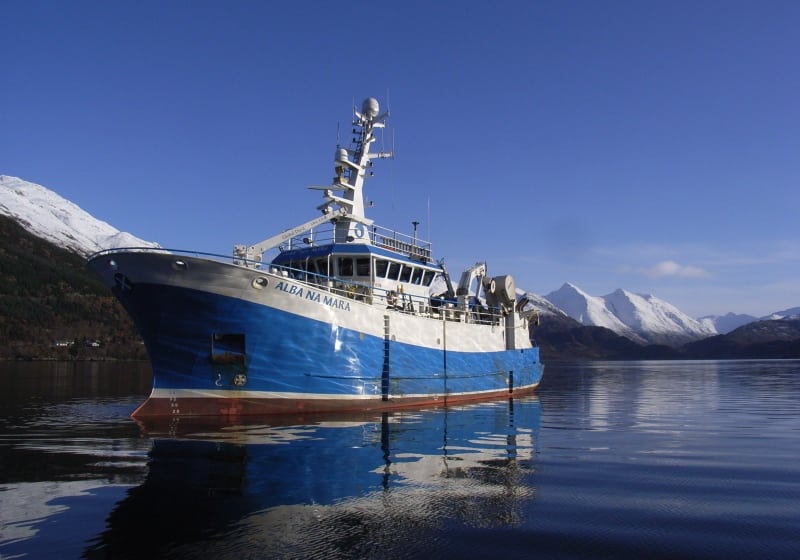
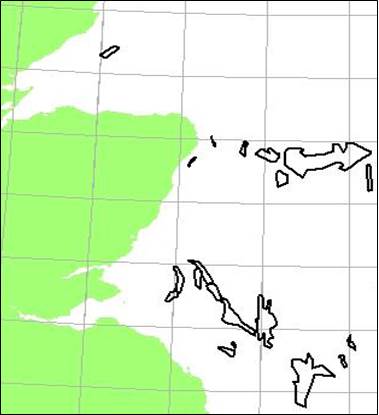
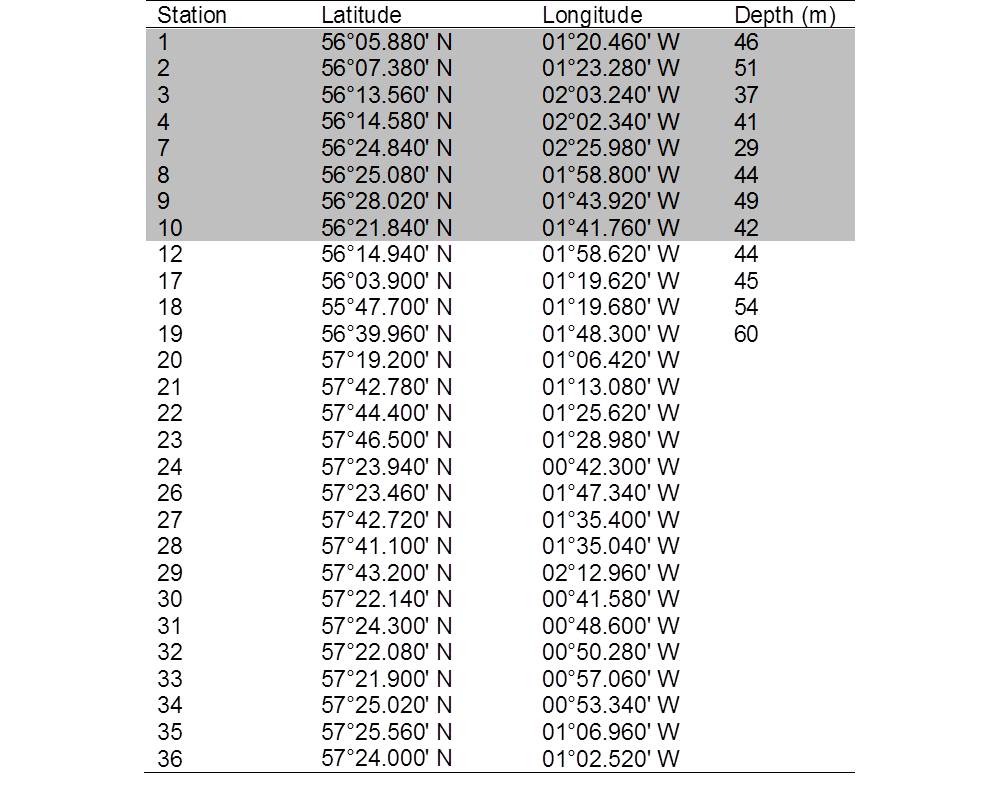
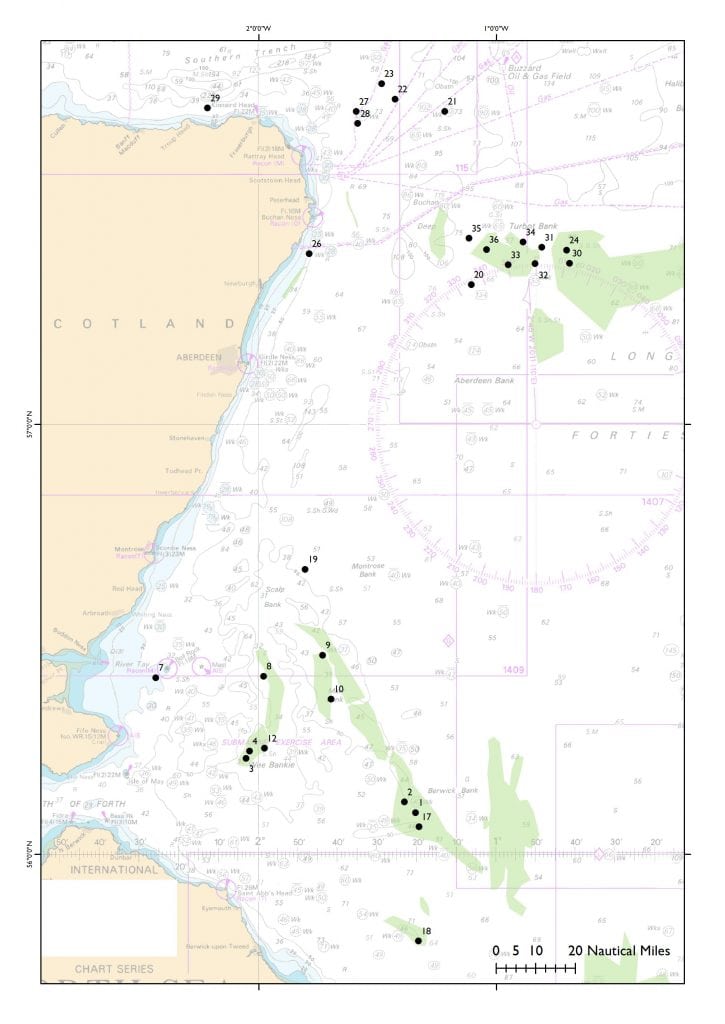
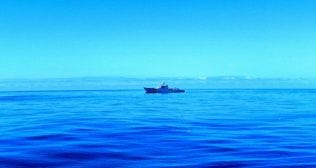
Leave a comment